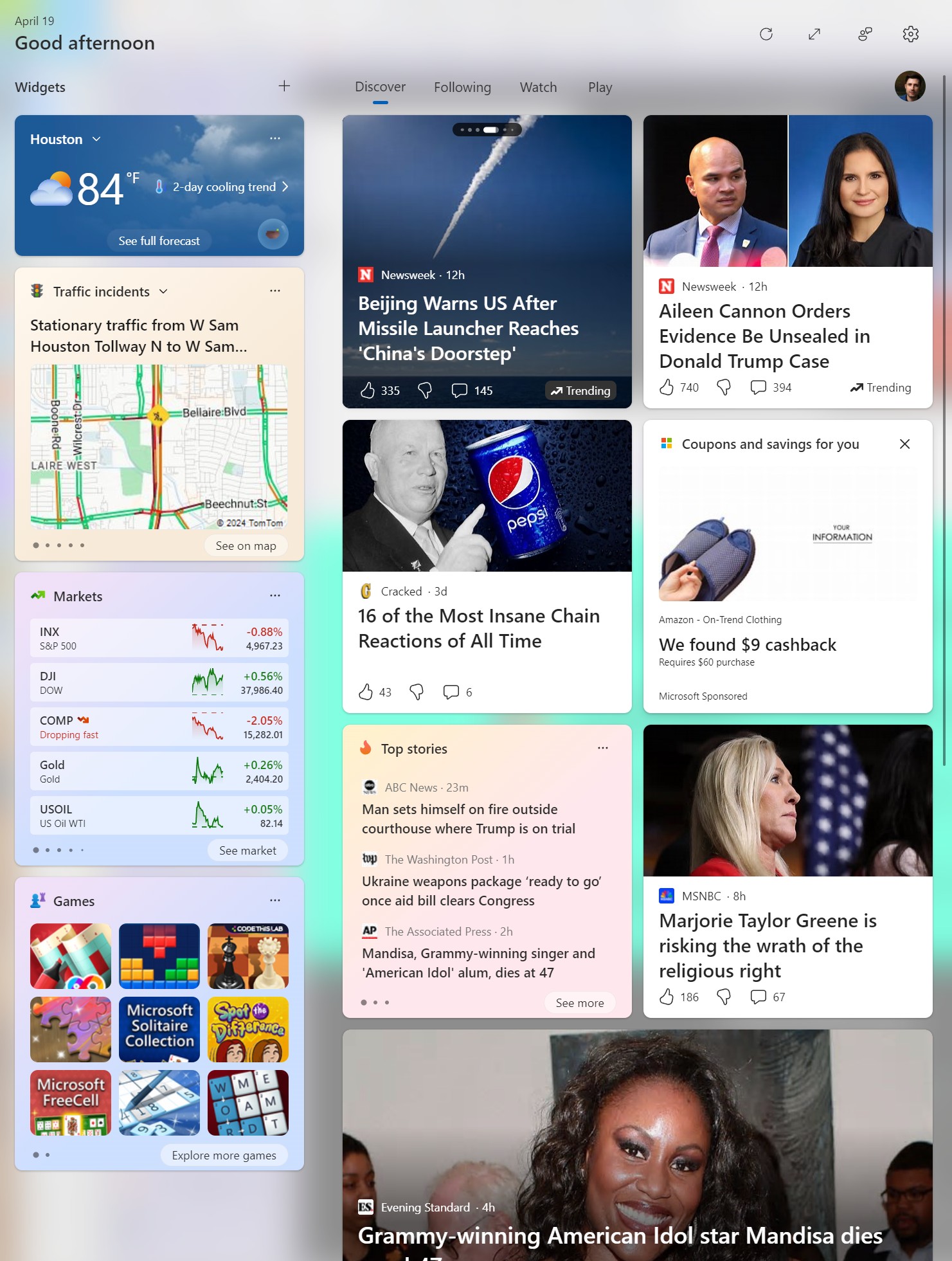Windows 11 boasts widespread compatibility and gaming dominance, but for many users, it’s a frustrating experience. Beneath the surface of new features and updates lies a system riddled with annoyances, pushing users to question: Why Is Windows 11 So Bad?
An intrusive pop-up showcasing irrelevant information clutters the user experience.
While Windows excels in hardware compatibility and gaming support, its user experience is often marred by intrusive features and questionable design choices. Features like the ever-present news feed, persistent Microsoft product integrations, and a seemingly broken file indexing system contribute to a frustrating user experience.
One of the most glaring issues is the constant barrage of unwanted information. A button beside the Start menu triggers a pop-up covering a significant portion of the screen with news, stock prices, and weather – information readily available elsewhere. The system tray houses Copilot, Microsoft’s AI companion, further contributing to the digital clutter.
Microsoft Edge’s default homepage, overwhelmed with unnecessary information.
The Start menu, a staple of the Windows experience, has devolved into a near-useless space filled with unpinned and often uninstalled apps. The search function, intended for quick file and program access, primarily returns web results from Bing, often irrelevant to the user’s intent. Even seeking help within the OS leads to convoluted redirects through Microsoft Edge, often leading back to the original starting point.
Microsoft’s support documentation, once integrated within the OS, now relies on convoluted redirects through Microsoft Edge, even if it’s not the default browser. Clicking on help links within system settings often leads to a Bing search with a single, unhelpful result – an excerpt of the relevant support page and a link back to the original settings screen. This frustrating process highlights a clear prioritization of Microsoft product synergy over user experience.
Edge, once a streamlined alternative to Chrome, is now bloated with sidebars and features, constantly prompting users to switch their default search engine to Bing. Its default homepage mirrors the intrusive nature of the Windows 11 interface, bombarding users with irrelevant information.
This aggressive push for Microsoft product integration extends beyond Windows 11. Countless apps clamor for attention, and budget devices often come pre-loaded with bloatware. While removing bloatware is a common practice, its integration within the OS itself raises concerns. Unlike manufacturer-specific Android modifications, the core Windows 11 experience is directly affected by these intrusive elements.
The root of these issues may lie in the decades of layered development, with each new Windows iteration built upon the foundation of its predecessors. However, this doesn’t explain the regression in functionality, with previously reliable features replaced by less effective systems. With a dominant market share, Microsoft seems incentivized to prioritize pushing its products over refining the user experience. Each user nudged towards Bing, Edge, or Copilot represents a potential revenue stream, justifying the intrusive design choices.
While technical solutions exist to mitigate some of these issues, the average user may not possess the knowledge or inclination to implement them. They’re left to navigate a cluttered and frustrating operating system, constantly bombarded with unwanted distractions. The question remains: will Microsoft prioritize user experience over aggressive product integration in future updates?

